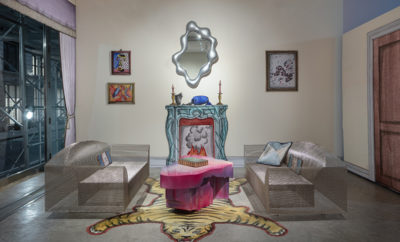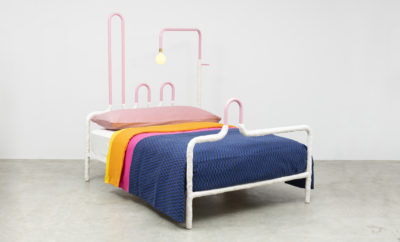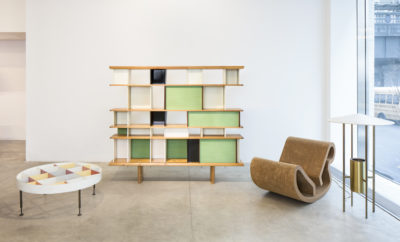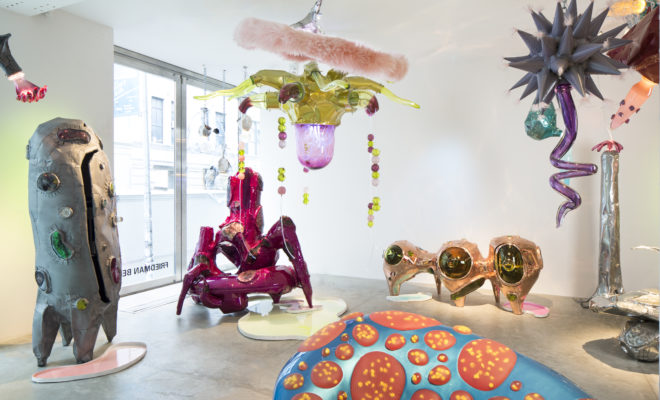 Installation view of “Misha Kahn: Midden Heap” at Friedman Benda Gallery. Photo by Dan Kukla, Courtesy of Friedman Benda and Misha Kahn
Installation view of “Misha Kahn: Midden Heap” at Friedman Benda Gallery. Photo by Dan Kukla, Courtesy of Friedman Benda and Misha Kahn
Exhibition
MIDDEN HEAP: Misha Kahn at Friedman Benda
Friedman Benda’s current exhibition, Midden Heap, showcasing the work of designer Misha Kahn, is most certainly not your typical design show. But we are also living in atypical times and Kahn’s ideas invite us to expand our minds beyond the now.
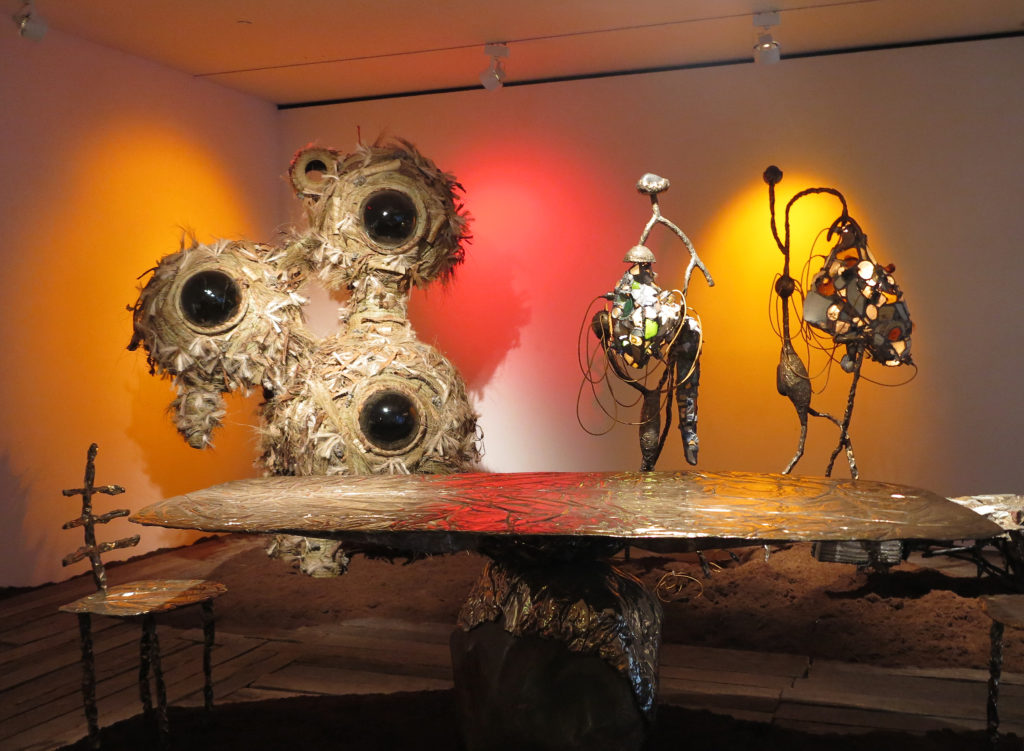
Installation view. Photograph by Paul Clemence.
A midden heap refers to the assemblage of sea life debris organized by an octopus to decorate and hide its den. Kahn says he felt a certain kinship with this mostly lonesome sea creature working tirelessly on a decorating project. But there’s also something about the arbitrariness and freedom of how both the octopus and Kahn go about choosing the elements for their creations—an openness to the instinctive interest in one material or another. “I feel some material choices I make go against these ingrained rules of the design world regarding the materials hierarchy, like combining, for example, bronze with trash would corrupt the fine metal and devalue it,” says Kahn. “I think if it looks nice, why not go for something like that?”
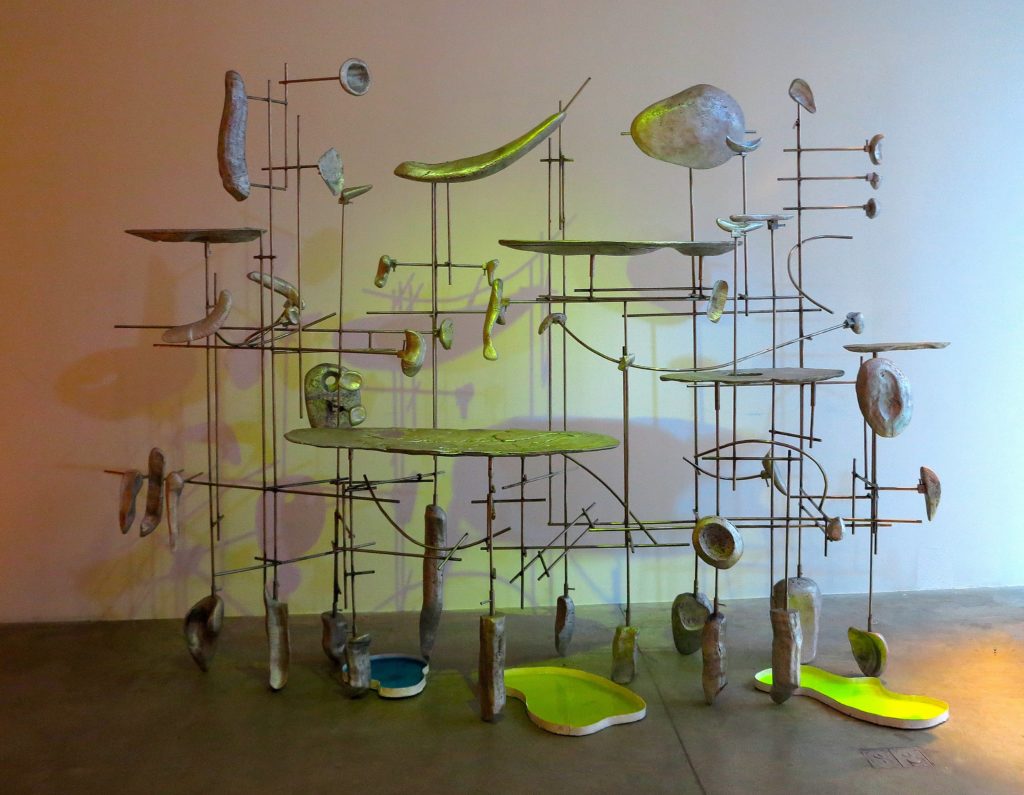
Photograph by Clemence.
True to that philosophy, the exhibit features chairs, cabinets, dressers, tables, and armoires made from an eclectic mix of found and new materials. Together with bronze, glass, resin, and copper, he added orthopedic gel cushions and a variety of litter and debris that he came across in visits to Dead Horse Bay in the Rockaways. He then allowed his imagination to fly uncensored, creating pieces that juxtapose or weave one exotic material with another—using these contrasts to create a universe all its own. Adding to the dramatic effect of the work, Kahn transformed the interior of the gallery: one side was made to be the “earth” part, with wood planks and soil covering the floor and grounding the scale, while the other side, the “ocean,” features lighter colors, fluid shapes, and more malleable materials. The fantastical and immersive feel of the installation is enhanced by lighting with colored gel filters. Not surprisingly, one of the projects on Kahn’s list is to do a large-scale public work, likely involving structural elements. “I am interested in exploring many different fields with my work,” Kahn says. “It feels arbitrary to get caught up on only one or other discipline.”
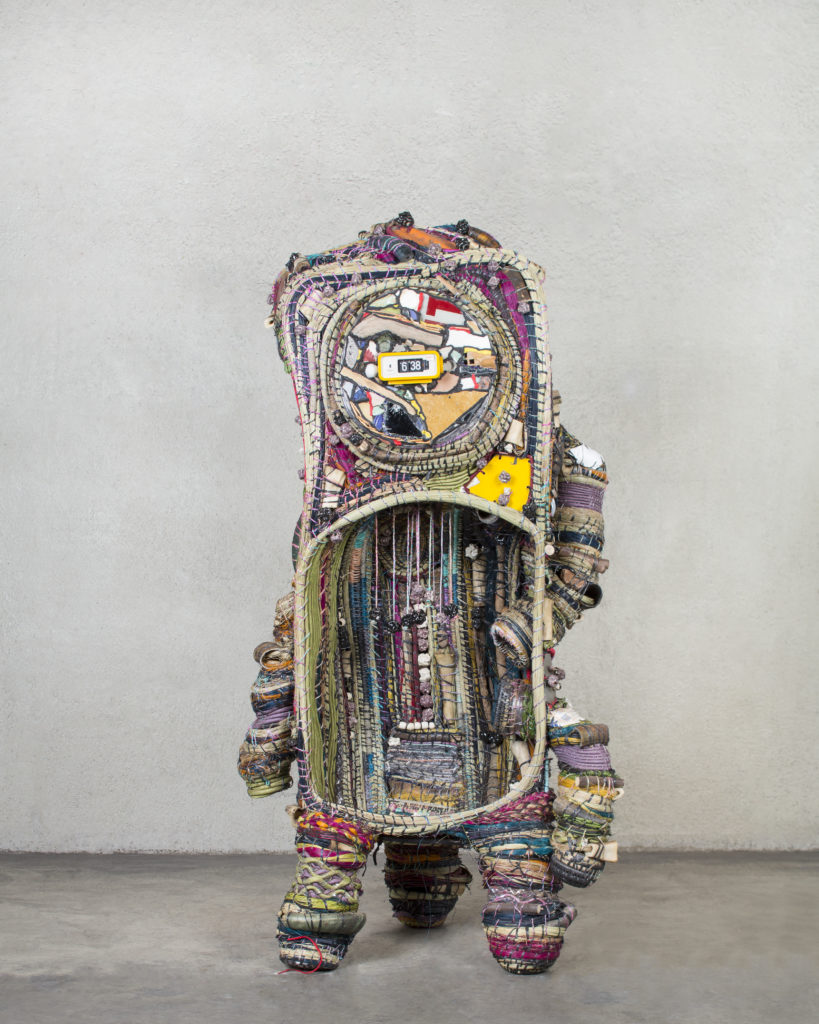
The Borrower by Misha Kahn. Photograph by Dan Kukla; courtesy of Friedman Benda and Misha Kahn.
If the octopus’s creative endeavor aims to seclude and protect itself, Kahn’s work does just the opposite—it succeeds in reaching out and connecting with people. While he is often tempted to dive into purely artistic projects, without the restrictions of functionality, he explains that he sees function as an important element that gives people a concrete entry point into an idea.
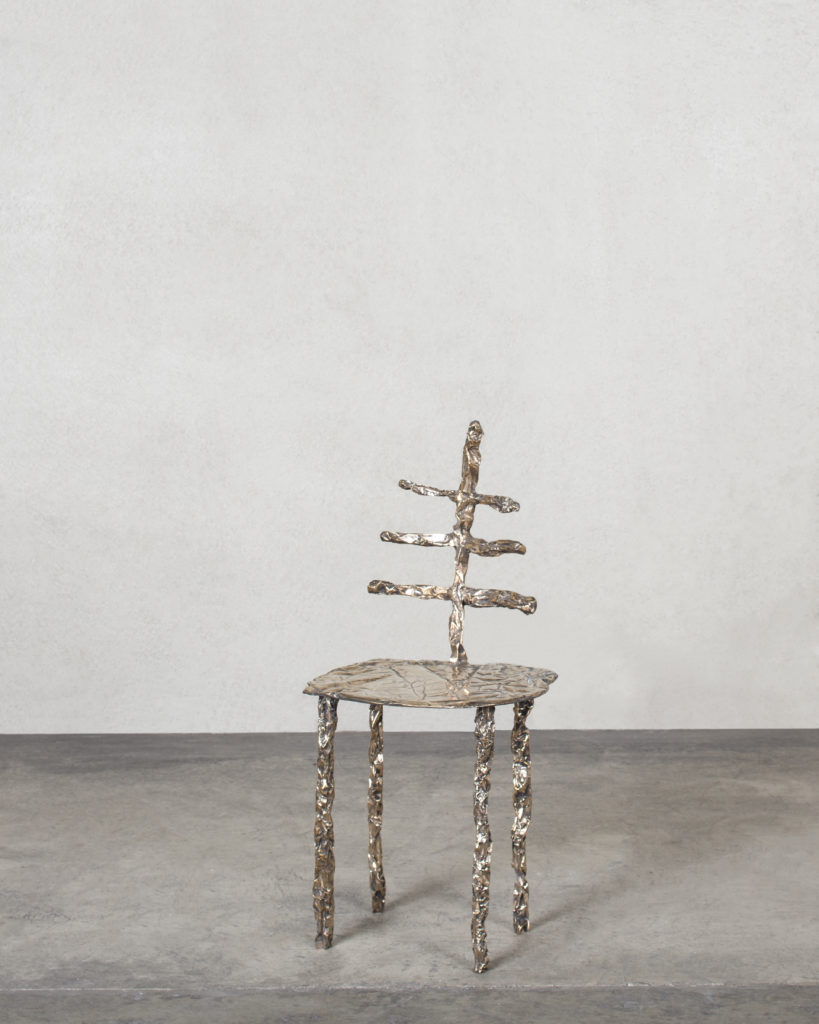
Miss Fishy by Misha Kahn. Photograph by Dan Kukla; courtesy of Friedman Benda and Misha Kahn.
And as illustrated by this show, his aesthetic—ever playful and imaginative—eludes simple definitions: primitive-looking yet futuristic (think the Jetsons meets the Flinstones), formidable yet inviting. “I want people to leave the show with a feeling,” he explains. “More and more I have been realizing that there is a way of thinking texturally in your head, which is how we normally think, but then there’s a way of thinking through objects. Everything has a language of its own and sometimes when you try to think of it through words, it falls short.”
Two very special collaborators helped Kahn bring his creations to life: one is the talented glass artist Deborah Czeresko, who executed the glass components for many of the pieces in the show, and the other, Gone Rural, the artisan enterprise from Swaziland composed of hundreds of female weavers, who through their craft helped turn Kahn’s materials into one single object.


